This forefoot deformity usually affects toes two through five (referred to as the lesser toes, with the big toe being referred to as the great toe).
The toe bones are called phalanx bones (pleural is phalanges), and the bones from which the phalanges extend are called the metatarsal bones.
A hammertoe deformity is one where the phalanx< of the toe is extended (bent upwards) relative to the metatarsal bone. This deformity causes more pressure on the ball of the foot against the shoe (on the sole) and against the bent part of the toes on the top of the foot, both sources of pain.
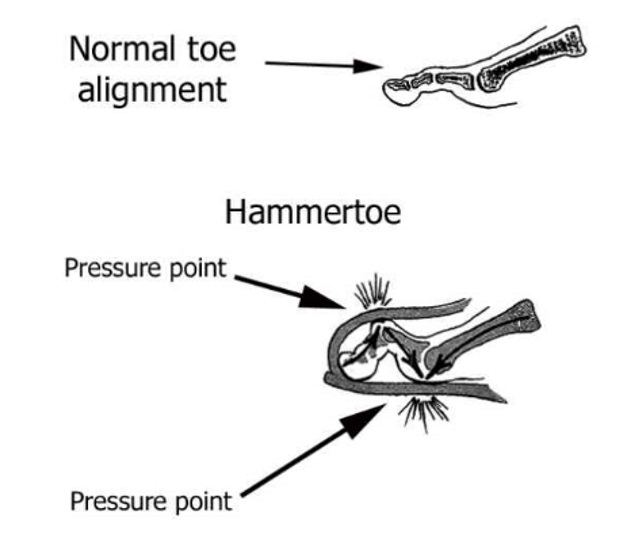
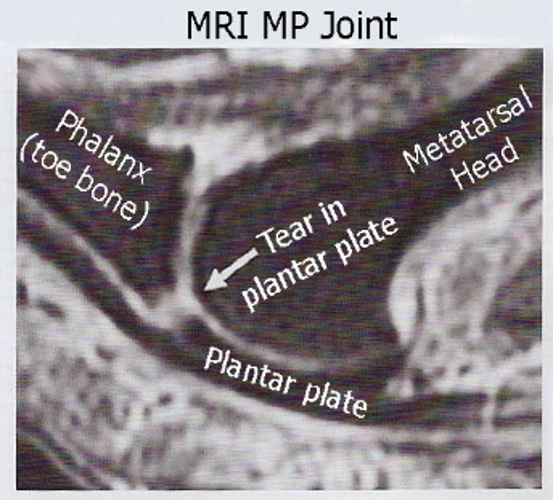
Sometimes, as is shown in the MRI exam of the metatarso-phalangeal (MP) joint, a major soft tissue structure that helps stabilize that MP joint, the plantar plate, can develop a tear which can lead to instability of that MP joint.
The patients who are more likely to develop this condition are those where the metatarsal bone length of the lesser toes are longer than for the great toe.
Non surgical treatments include:
–Metatarsal pads
–Shoe modifications (to allow more room for the bent posture of the toes)
–Cortisone injections (temporary relief)
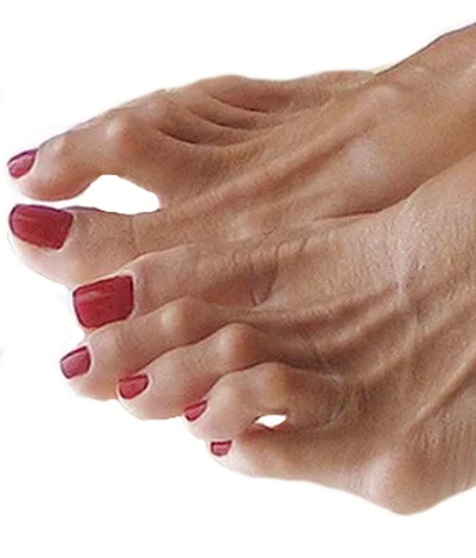
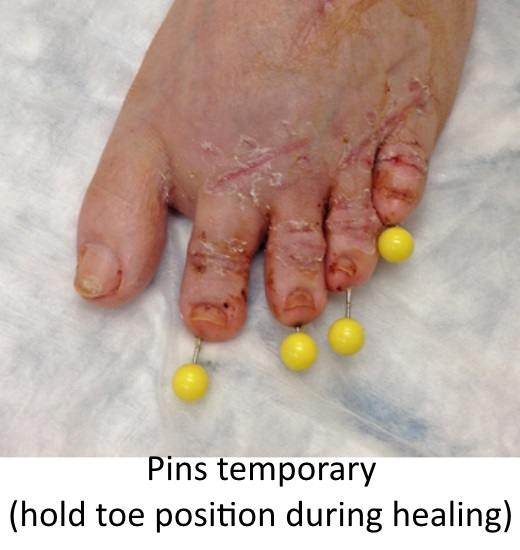
In those cases where pain is continuing, surgical treatment is an option.
Surgery can be done, usually on an outpatient basis (you don’t stay in the hospital) to correct hammertoe deformities.
In most cases, the position of the repair is maintained with pins in the toes. The pins stay in place for four weeks and are removed in the office with minimal patient discomfort.
During the recovery period, a post operative shoe, pictured here, is worn. This shoe protects the forefoot from the forces that could potentially jeopardize the surgical repair by bending or causing loosening of the pins.
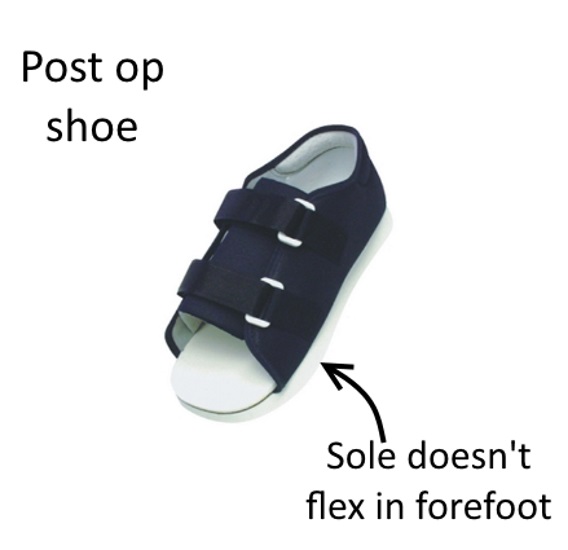
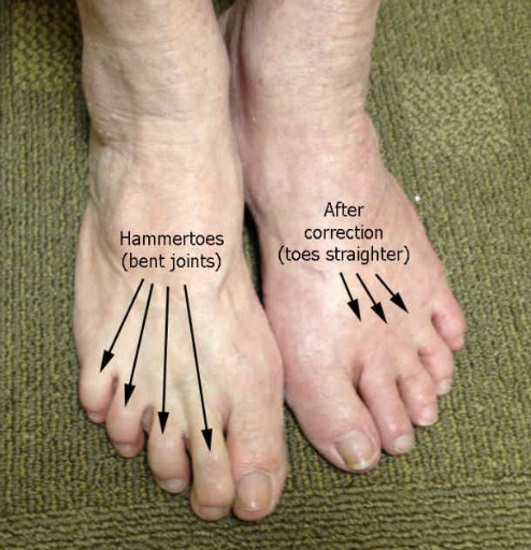
After correction of hammertoe deformities, the toes are straighter and fit better into the shoes.
